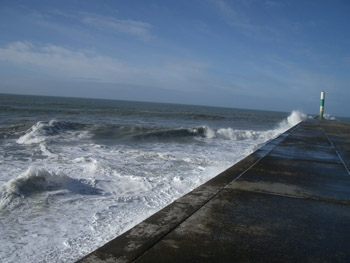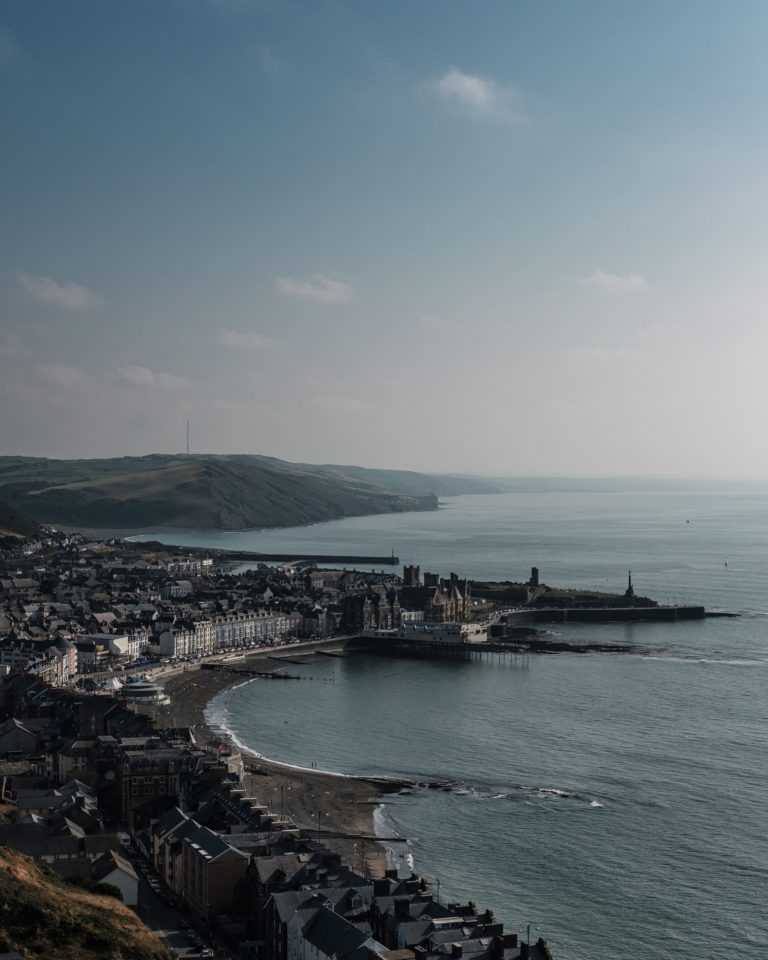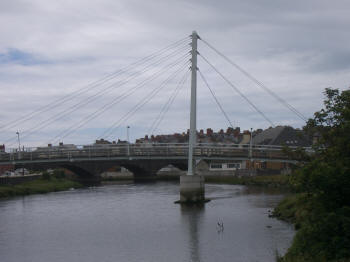The harbour of Tanybwlch
The harbour is literally on our doorstep and provides an ever-changing backdrop to our lives and those of a surprising number of creatures with whom we share this environment.
Before it became an independently-administered port at the end of the 18th century, Aberystwyth Harbour came under the jurisdiction of the harbourmaster at Aberaeron (25 km to the south) and was little more than sheltered moorings where the Rivers Ystwyth and Rheidol entered the sea.
Even so, it was the centre of a significant fishing and cargo industry and began a major expansion in the early years of the 19th century, becoming Wales’s second busiest port at its height.
A major figure in the development of Aberystwyth Harbour was one George Bush (no less), who directed the construction in 1836 of the stone pier that marks its southern edge.
The rocks to build the pier were quarried from the foot of Alltwen and transported by a tramway running above Tanybwlch beach. Odd bits of this construction are still visible.


